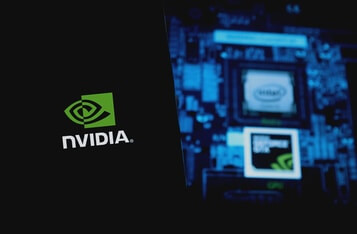NVIDIA Introduces NIM Microservices for Enhanced Speech and Translation Capabilities
NVIDIA has unveiled its NIM microservices for speech and translation, part of the NVIDIA AI Enterprise suite, according to the NVIDIA Technical Blog. These microservices enable developers to self-host GPU-accelerated inferencing for both pretrained and customized AI models across clouds, data centers, and workstations.
Advanced Speech and Translation Features
The new microservices leverage NVIDIA Riva to provide automatic speech recognition (ASR), neural machine translation (NMT), and text-to-speech (TTS) functionalities. This integration aims to enhance global user experience and accessibility by incorporating multilingual voice capabilities into applications.
Developers can utilize these microservices to build customer service bots, interactive voice assistants, and multilingual content platforms, optimizing for high-performance AI inference at scale with minimal development effort.
Interactive Browser Interface
Users can perform basic inference tasks such as transcribing speech, translating text, and generating synthetic voices directly through their browsers using the interactive interfaces available in the NVIDIA API catalog. This feature provides a convenient starting point for exploring the capabilities of the speech and translation NIM microservices.
These tools are flexible enough to be deployed in various environments, from local workstations to cloud and data center infrastructures, making them scalable for diverse deployment needs.
Running Microservices with NVIDIA Riva Python Clients
The NVIDIA Technical Blog details how to clone the nvidia-riva/python-clients GitHub repository and use provided scripts to run simple inference tasks on the NVIDIA API catalog Riva endpoint. Users need an NVIDIA API key to access these commands.
Examples provided include transcribing audio files in streaming mode, translating text from English to German, and generating synthetic speech. These tasks demonstrate the practical applications of the microservices in real-world scenarios.
Deploying Locally with Docker
For those with advanced NVIDIA data center GPUs, the microservices can be run locally using Docker. Detailed instructions are available for setting up ASR, NMT, and TTS services. An NGC API key is required to pull NIM microservices from NVIDIA's container registry and run them on local systems.
Integrating with a RAG Pipeline
The blog also covers how to connect ASR and TTS NIM microservices to a basic retrieval-augmented generation (RAG) pipeline. This setup enables users to upload documents into a knowledge base, ask questions verbally, and receive answers in synthesized voices.
Instructions include setting up the environment, launching the ASR and TTS NIMs, and configuring the RAG web app to query large language models by text or voice. This integration showcases the potential of combining speech microservices with advanced AI pipelines for enhanced user interactions.
Getting Started
Developers interested in adding multilingual speech AI to their applications can start by exploring the speech NIM microservices. These tools offer a seamless way to integrate ASR, NMT, and TTS into various platforms, providing scalable, real-time voice services for a global audience.
For more information, visit the NVIDIA Technical Blog.
Read More
Filecoin (FIL) Surpasses 4 Million Blocks and Announces Major Developments
Sep 19, 2024 2 Min Read
NVIDIA AI Aerial Unveiled to Enhance Wireless Networks and Generative AI Solutions
Sep 19, 2024 2 Min Read
Runway Partners with Lionsgate to Revolutionize AI in Film Production
Sep 19, 2024 2 Min Read
SonicJobs Leverages AI to Revolutionize Job Application Processes
Sep 19, 2024 2 Min Read
Bitcoin (BTC) Market Faces Stagnation Amid Low Capital Flows
Sep 19, 2024 2 Min Read



